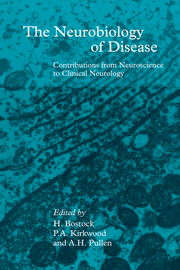Book contents
- Frontmatter
- Contents
- List of contributors
- Preface
- Part I Physiology and pathophysiology of nerve fibres
- Part II Pain
- 13 Human nociceptors in health and disease
- 14 Sensory consequences of inflammation
- 15 Non-voluntary muscle activity and myofascial pain syndromes
- 16 Is there a mechanism for the spinal cord to remember pain?
- 17 The neurophysiological basis of pain relief by acupuncture
- Part III Control of central nervous system output
- Part IV Development, survival, regeneration and death
- Index
16 - Is there a mechanism for the spinal cord to remember pain?
from Part II - Pain
Published online by Cambridge University Press: 04 August 2010
- Frontmatter
- Contents
- List of contributors
- Preface
- Part I Physiology and pathophysiology of nerve fibres
- Part II Pain
- 13 Human nociceptors in health and disease
- 14 Sensory consequences of inflammation
- 15 Non-voluntary muscle activity and myofascial pain syndromes
- 16 Is there a mechanism for the spinal cord to remember pain?
- 17 The neurophysiological basis of pain relief by acupuncture
- Part III Control of central nervous system output
- Part IV Development, survival, regeneration and death
- Index
Summary
Introduction
Pain is often an immediate consequence of injury of somatic tissue or of nerves. In addition, longer-term sensory events may follow such injuries, including primary and secondary hyperalgesia, allodynia, and the development of a chronic pain state (Wall & Melzack, 1989; Bonica, 1990). Acute pain is generally easy to recognize and to treat. However, the longer-term sensory changes are more difficult to recognize, are poorly understood, and are difficult to manage. Clearly, a theoretical foundation is needed on which to base clinical investigations of subacute and chronic pain states.
In the past several years, a number of experimental approaches have been used to improve our understanding of the neural events that follow acute injury. Evidence about sensory events has come from behavioural studies, and evidence about neural events has been derived from electrophysiological recordings and pharmacological manipulations. The studies can generally be subdivided into those stressing peripheral mechanisms, as exemplified by the chapters by Ochoa, and by Iggo (this volume), and those emphasizing central mechanisms, as reviewed in this chapter and that by Shen (this volume).
A model of secondary hyperalgesia
When the skin is damaged, pain often occurs immediately, and then primary and secondary hyperalgesia may develop (Lewis, 1942; Hardy, Wolff & Goodell, 1952). The secondary hyperalgesia may be accompanied by mechanical allodynia (LaMotte et al., 1991, 1992; Torebjörk, Lundberg & La-Motte, 1992).
- Type
- Chapter
- Information
- The Neurobiology of DiseaseContributions from Neuroscience to Clinical Neurology, pp. 177 - 188Publisher: Cambridge University PressPrint publication year: 1996
- 2
- Cited by

